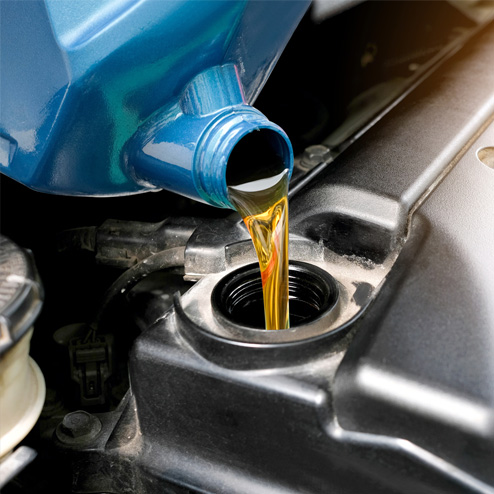49. Cabecera articulo EC
The Circular Economy of lubricant oil
The new Law on Waste and Contaminated Land for a Circular Economy came into force on 10 April. It is set to become one of the main pieces of legislation to promote the circular economy and decarbonisation in Spain, and to continue to make progress towards achieving the Sustainable Development Goals of the United Nations 2030 Agenda.
17-05-2022

24. Parrafo articulo EC aceite lubricante
A law that endorses what waste management organisations have been putting into practice for more than a decade: that we require a paradigm shift to banish the current linear, throwaway economic model, based on the mass production and sale of products, towards a circular model in which waste never becomes waste, but returns to the market in the form of new raw materials and by-products ready to form part of new production processes. In an infinite circular motion.
The life cycle of lubricant oil, a product present across many different sectors and production processes involving engines, machinery, gears or parts—in 2021 alone around 295,000 t of this product were put on the market—is a clear example of the future circular economy, which is already the present, and has been making its environmental and economic benefits clear for years now.
In 2007, less than a hundred industrial oil manufacturers came together to create SIGAUS, in order to comply with legislation that made them responsible for the waste oil resulting from the products they placed on the market (known as Extended Producer Responsibility, EPR). Today, 15 years later, almost 250 companies are working, beyond their legal obligation, in an integrated manner in terms of innovation and environmental protection as an essential part of their strategy, consolidating a system that in 2021 exceeded 2 million t of recovered used industrial oils.
32. Parrafo cita articulo EC
“
A single litre of used oil can pollute up to 1 million litres of water, the equivalent of an Olympic-sized swimming pool, and remain in the environment for 10-15 years.
„
But these figures aren’t possible working alone. They are possible thanks to the joint work of all the agents involved in the life cycle of lubricant oil: a network made up of 207 waste oil management facilities, the aforementioned manufacturing companies, public bodies and citizens. Thanks to this collaboration, almost 80% of the waste collected was regenerated in 2021 (a record figure to date), thus contributing to almost 900,000 t of new oils being returned to the market in the last 15 years, and the saving of 956,000 t of CO2 emissions into the atmosphere.
Environmental protection in numbers
Last year, the system set up by SIGAUS collected waste from almost 70,000 production establishments, from which 174,440 collections were made. A total of 4,420 t of waste oils were recovered in the surroundings of almost 260 protected areas, with a great wealth of nature and biodiversity. We serviced more than 3,100 producer points of this hazardous waste, which is highly polluting due to the heavy metals it accumulates during its use, its great capacity of infiltration and its poor biodegradability.
Thanks to the regeneration treatment, a total of 63,540 t of new lubricants were returned to the market in 2021 alone, thus avoiding the emission of 67,700 t of CO2 into the atmosphere and the consumption of almost 30 million barrels of oil, which would have been otherwise needed to obtain the same amount of industrial oils.
24. Parrafo articulo EC aceite lubricante (II)
The quantity of used oils processed as fuel for industrial energy used last year amounted to almost 26,100 t, saving a total of 24 GWh of energy and avoiding the emission of almost 14,300 t of CO2, compared with that fuel having been produced from oil.
In line with the new Law on Waste and Contaminated Land, SIGAUS is working to protect the environment and human health through the application of a waste hierarchy system, focusing first and foremost on the prevention and reduction of waste generation, an issue on which the Extended Producer Responsibility Collective Systems (EPRCS) have also been working for years.
Indeed, the new standard underlines the importance of these EPR systems, opening the door to their application to new waste flows. It also regulates the functioning of waste management companies, in matters including transparency, efficiency and the representativeness of manufacturers in decision-making, in a more complete and precise manner. New requirements that confirm the validity and importance of historical initiatives adopted by SIGAUS, such as the triple audit of its activity (accounts, declarations of economic agents, Sustainability Report), independent studies of management costs or market share, or the utmost respect for free competition. All factors that contribute to the efficiency of a management model that has proven to be successful in the difficult path towards a world where the economy and environment go hand in hand.